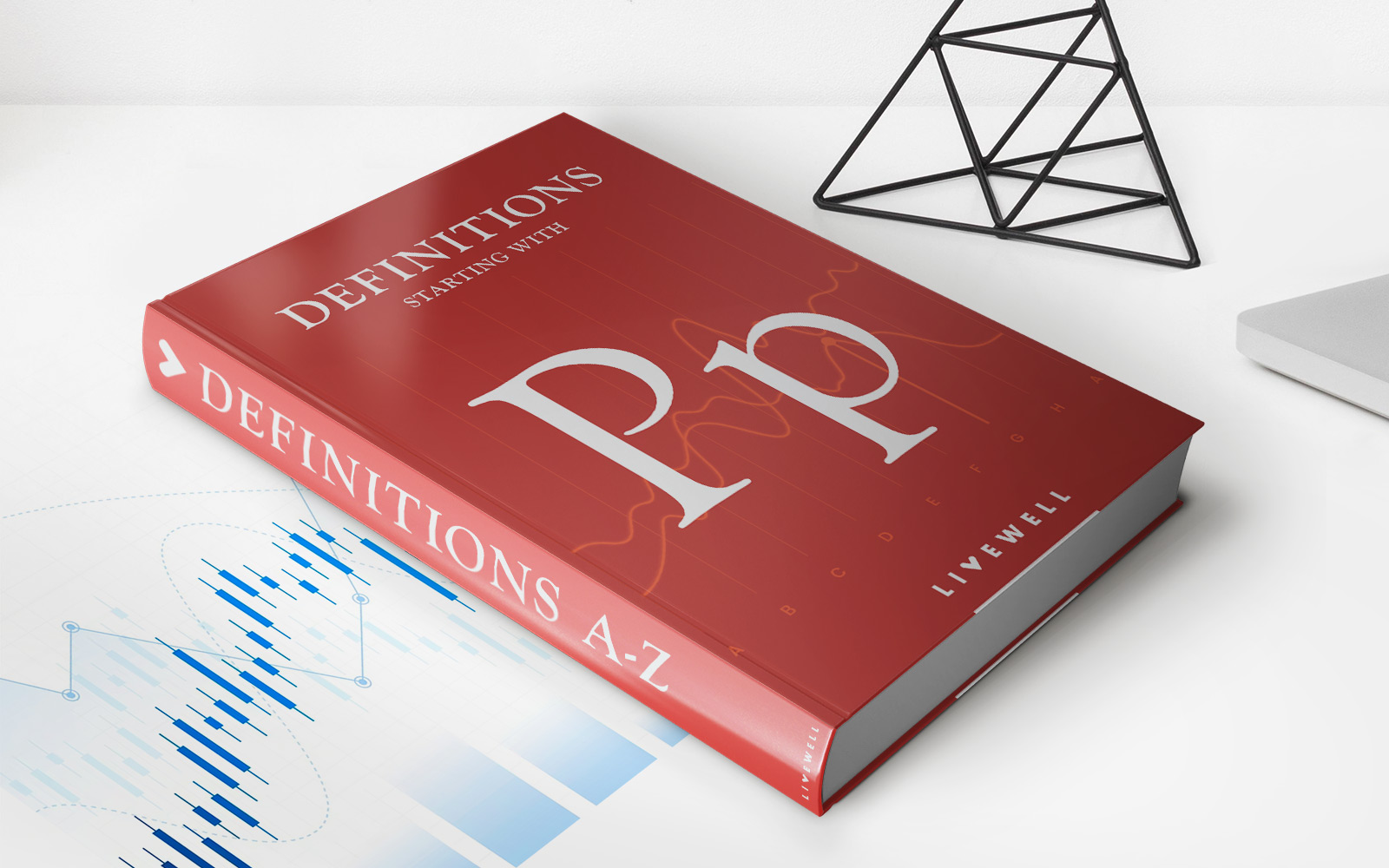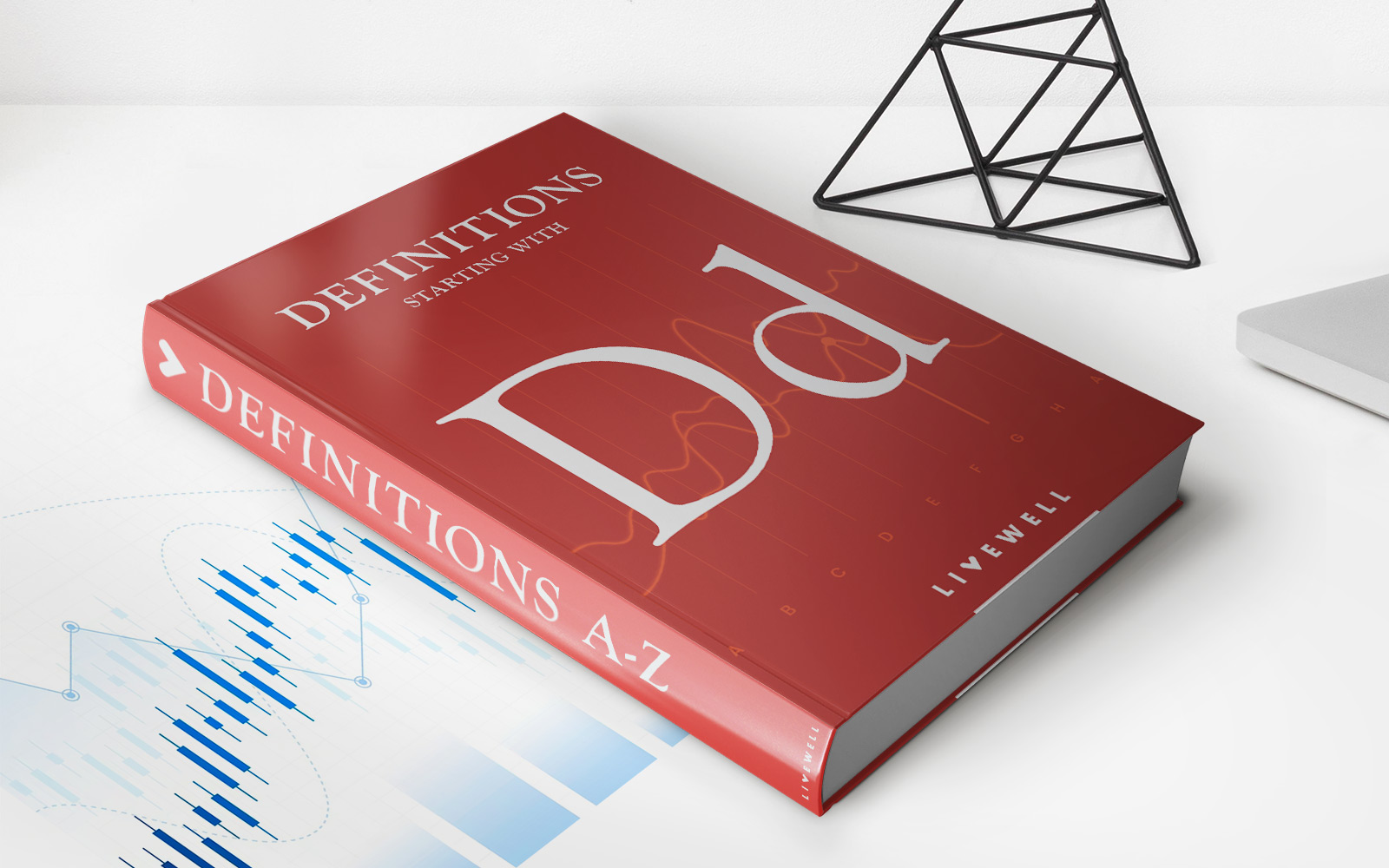

Finance
What Are Distributions In Accounting
Published: October 13, 2023
Learn the importance of distributions in accounting and how they relate to finance. Gain a better understanding of financial statements and their impact on profitability.
(Many of the links in this article redirect to a specific reviewed product. Your purchase of these products through affiliate links helps to generate commission for LiveWell, at no extra cost. Learn more)
Table of Contents
Introduction
Welcome to the world of accounting, where numbers take center stage and financial transactions are meticulously tracked and recorded. In the realm of accounting, one concept that often arises is that of distributions. Distributions play a critical role in the management of financial resources and the allocation of profits in various entities, be it a corporation, partnership, or sole proprietorship.
Simply put, distributions refer to the disbursal of assets, whether it be cash or other resources, to shareholders, partners, or owners of a business. These distributions serve as a way to distribute profits and provide individuals with a return on their investment or ownership interest in a company. The accounting treatment of distributions is crucial as it impacts the financial statements, tax implications, and overall financial health of an entity.
In this article, we will delve deeper into the world of distributions in accounting and explore the different types of distributions, their accounting treatment, and their significance for various entities. Whether you are a budding entrepreneur, an investor, or a finance enthusiast, understanding distributions can empower you to make informed decisions and navigate the financial landscape with confidence.
Definition of Distributions
In the realm of accounting, distributions refer to the allocation or disbursement of assets, usually in the form of cash, to the shareholders, partners, or owners of a business. These distributions are a way for businesses to distribute profits and provide a return on investment to the individuals who have a stake in the company. Distributions can take various forms, such as cash dividends, stock dividends, stock splits, or distributions to partners or owners.
It is important to note that distributions are different from revenue or income. Revenue represents the inflow of funds from the sale of goods or services, while distributions represent the outflow of funds from the company to its stakeholders.
The primary purpose of distributions is to reward the individuals who have invested in or contributed to the success of a business. Shareholders of publicly traded companies, for example, expect to receive regular distributions in the form of dividends as a reward for their investment and as an incentive to continue holding shares. Similarly, partners in a partnership or owners of a sole proprietorship may receive distributions as a way to share in the profits generated by the business.
Distributions can have varying frequencies and amounts, depending on the financial performance and policies of the entity. Some companies may choose to distribute dividends on a quarterly basis, while others may opt for annual or even irregular distributions.
The concept of distributions is not limited to just corporations. Partnerships and sole proprietorships also distribute profits to their respective partners or owners. In these cases, distributions are often referred to as “draws” or “owner’s equity withdrawals.” The purpose remains the same – to provide a return on investment or ownership interest.
Overall, understanding the concept of distributions is essential in comprehending the financial dynamics of a business. It is an integral part of the accounting process and allows stakeholders to receive a fair share of the profits generated by the entity.
Types of Distributions in Accounting
In accounting, there are several types of distributions that entities can use to allocate profits and provide a return on investment to their stakeholders. Let’s explore some of the most common types of distributions:
- Cash Dividends: Cash dividends are the most well-known and frequently used type of distribution. It involves the disbursement of a portion of the company’s profits to its shareholders in the form of cash. Dividends are typically declared by the company’s board of directors, and the amount per share may vary based on the company’s financial performance and dividend policy. Cash dividends are often seen as a way to reward shareholders and attract potential investors.
- Stock Dividends: Stock dividends, also known as bonus shares, involve the distribution of additional shares to existing shareholders instead of cash. This means that shareholders receive additional shares of the company’s stock based on their current shareholdings. Stock dividends are usually declared when a company wants to distribute profits while conserving cash. Shareholders benefit from stock dividends by increasing their ownership percentage in the company without the need to invest additional funds.
- Stock Splits: Stock splits are a unique type of distribution that involves increasing the number of outstanding shares in a company. This is done by dividing existing shares into a higher quantity. For example, a company may implement a 2-for-1 stock split, which means that each existing share is split into two shares. The purpose of a stock split is to make the shares more affordable and increase liquidity in the market. Shareholders receive more shares, but the overall value of their investment remains the same.
- Distribution to Partners or Owners: In partnerships and sole proprietorships, distributions are often made to the partners or owners of the business. These distributions, commonly referred to as “draws” or “owner’s equity withdrawals,” allow partners or owners to receive their share of the profits generated by the business. The distribution amount may be based on the owner’s agreement, partnership agreement, or the amount of capital invested in the business.
Each type of distribution has its own implications for the financial statements and tax considerations. It is important for entities to carefully consider the impact of distributions on their cash flow, profitability, and compliance with accounting standards and tax regulations to ensure proper management of their financial resources.
Cash Dividends
Cash dividends are a common type of distribution in accounting. They involve the disbursement of a portion of a company’s profits to its shareholders in the form of cash. Cash dividends are typically declared by the company’s board of directors and are a way to reward shareholders for their investment and provide them with a return on their ownership interest.
Companies that have a consistent history of generating profits often choose to distribute cash dividends to attract investors and maintain shareholder loyalty. The amount of cash dividend per share is usually determined by the company’s dividend policy and financial performance.
There are several important factors to consider when it comes to cash dividends:
- Dividend Declaration: The company’s board of directors declares the dividend, specifying the amount per share and the date of record. The date of record determines which shareholders are eligible to receive the dividend.
- Payment Date: The payment date is when the cash dividend is actually distributed to eligible shareholders. It is important to note that there is typically a time lag between the date of record and the payment date.
- Dividend Yield: The dividend yield is a measure of the dividend in relation to the stock price. It is calculated by dividing the annual dividend per share by the stock price per share. The dividend yield is often used by investors to assess the return on their investment in the company’s stock.
- Impacts on Financial Statements: Cash dividends have an impact on a company’s financial statements. They reduce the retained earnings, which is a component of equity on the balance sheet. The cash outflow for dividends is reflected in the cash flow statement.
- Tax Considerations: Cash dividends received by shareholders are often subject to taxation. The tax treatment may vary depending on the jurisdiction and the individual’s tax situation. It is important for shareholders to consult with a tax professional to understand the tax implications of receiving cash dividends.
Cash dividends are an important way for companies to distribute profits and reward shareholders. They provide shareholders with a steady income stream and can influence the demand for the company’s stock in the market. For investors, cash dividends can be an attractive feature when considering investment opportunities, as they provide a tangible return on their investment.
Stock Dividends
Stock dividends are a type of distribution in which a company issues additional shares of its stock to existing shareholders instead of distributing cash. This means that shareholders receive additional shares in proportion to their existing shareholdings. Stock dividends are often referred to as “bonus shares” and are typically declared by the company’s board of directors.
The primary purpose of stock dividends is to reward existing shareholders by increasing their ownership percentage in the company without the need for additional investment. This can be particularly appealing to investors who believe in the long-term growth and potential of the company.
Here are some key points to understand about stock dividends:
- Proportional Distribution: Stock dividends are generally issued to shareholders in proportion to their current ownership stake. For example, if a company declares a 10% stock dividend, shareholders will receive an additional 10 shares for every 100 shares they already own.
- Impact on Share Price: While stock dividends increase the number of shares outstanding, the overall value of the investment remains the same. As a result, the market price per share may decrease to reflect the increased supply of shares. However, the total value of the shareholder’s investment remains unchanged.
- Retained Earnings: Stock dividends are funded by the company’s retained earnings, which are the accumulated profits that have not been distributed to shareholders as dividends.
- Financial Statement Impact: Stock dividends have an impact on a company’s financial statements. They increase the number of outstanding shares, which affects the calculation of earnings per share (EPS) and the book value per share. Additionally, the value of the stock dividend is transferred from retained earnings to the capital stock or additional paid-in capital account on the balance sheet.
- Tax Implications: In many jurisdictions, stock dividends are generally not taxable, as they are considered a non-cash distribution. However, shareholders may have tax obligations when they eventually sell the shares they received as stock dividends. It is advisable for shareholders to consult with a tax professional to understand the specific tax implications in their jurisdiction.
Stock dividends are a way for companies to reward shareholders without depleting their cash reserves. By issuing additional shares, companies can show their commitment to shareholders and reinvest retained earnings back into the business. For shareholders, stock dividends can be a valuable way to increase their ownership stake and participate in the future growth of the company.
Stock Splits
Stock splits are a type of distribution in which a company increases the number of outstanding shares by dividing its existing shares into a larger quantity. The purpose of a stock split is to make the shares more affordable and increase liquidity in the market. Stock splits do not impact the overall value or market capitalization of the company, but they affect the price per share and the number of shares held by each shareholder.
Here are some key points to understand about stock splits:
- Ratio of Split: Stock splits are usually announced with a specific ratio, such as 2-for-1 or 3-for-1. For example, in a 2-for-1 split, each existing share is split into two shares, effectively doubling the number of outstanding shares. The ratio of the split determines how many shares a shareholder will receive for each existing share they own.
- Impact on Share Price: When a stock split occurs, the price per share is adjusted in inverse proportion to the split ratio. For a 2-for-1 split, the share price would be halved. The total value of the investment remains the same, but the lower share price can make the stock more accessible to a wider range of investors.
- Liquidity and Trading Activity: Stock splits can increase the liquidity of a company’s stock by attracting more investors. The lower share price resulting from a split might encourage new investors to enter the market and existing shareholders to purchase more shares.
- Financial Statement Impact: Stock splits do not affect a company’s financial position or the value of its total assets and liabilities. The number of shares outstanding and shareholders’ equity increase, while the par value per share decreases proportionally. The split is reflected in the financial statements and can impact ratios like earnings per share (EPS) and price-to-earnings (P/E) ratios.
- Psychological Impact: Stock splits can have a psychological impact on investors. A lower share price resulting from a split may create a perception of affordability and attract individual investors who may have been hesitant to invest in the higher-priced shares.
Stock splits can be seen as a positive sign of a company’s growth and confidence in its future prospects. They provide an opportunity for shareholders to increase their number of shares without requiring additional investment. Stock splits are considered a strategic move to enhance shareholder value and improve marketability, ultimately benefiting both the company and its shareholders.
Distribution to Partners or Owners
In partnerships, limited liability companies (LLCs), and sole proprietorships, distributions are made to the partners or owners of the business. These distributions, often referred to as “draws” in partnerships or “owner’s equity withdrawals” in sole proprietorships, allow partners or owners to receive their share of the profits generated by the business.
Here are some important points to understand about distributions to partners or owners:
- Profit Sharing: In partnerships and LLCs, profits are typically shared among the partners according to the terms of their partnership agreement. The allocation of profits may be based on factors such as the ownership percentage, capital invested, or a predetermined sharing ratio.
- Draws and Owner’s Equity Withdrawals: Partners in a partnership or owners of a sole proprietorship may take distributions by making draws against their respective capital accounts. These draws represent the distribution of profits or owner’s equity withdrawals from the business.
- Capital Account Adjustments: Distributions to partners or owners are typically recorded through adjustments to their capital accounts. The capital accounts reflect the ownership interest of each partner or owner in the business. When a distribution is made, the partner’s or owner’s capital account is reduced by the amount of the distribution.
- Tax Considerations: Distributions to partners or owners may have tax implications. In the case of partnerships and LLCs, partners report their share of the profits and losses on their individual tax returns, regardless of whether the profits are distributed. The tax treatment of distributions may vary depending on the jurisdiction and the entity’s structure. It is essential for partners or owners to consult with a tax professional to understand their tax obligations.
- Timing and Frequency: The timing and frequency of distributions to partners or owners depend on the business’s financial performance, cash flow requirements, and the terms outlined in the partnership agreement or operating agreement. Some partnerships or sole proprietorships may choose to distribute profits on a regular basis, such as monthly or annually, while others may distribute profits only when certain conditions are met.
Distributions to partners or owners play a crucial role in rewarding them for their contributions to the business and allowing them to enjoy the financial benefits of ownership. It is important for partners and owners to establish clear guidelines and agreements regarding the distribution of profits to ensure transparency and fairness within the entity.
Accounting Treatment of Distributions
The accounting treatment of distributions is an essential aspect of properly recording and reporting the financial impact of distributing profits to shareholders, partners, or owners. The specific accounting treatment depends on the type of distribution and the entity’s legal structure. Here are some general guidelines for the accounting treatment of distributions:
- Cash Dividends: When a company declares cash dividends, it must record the liability in its financial statements. The declaration of cash dividends decreases retained earnings, which is a component of the equity section on the balance sheet. When the dividends are paid, the liability is eliminated, and cash is reduced by the amount distributed. The financial impact of cash dividends is reflected in the statement of changes in equity and the cash flow statement.
- Stock Dividends: Stock dividends are treated differently from cash dividends. Instead of recording a liability, the company transfers a portion of retained earnings to a capital stock or additional paid-in capital account on the balance sheet. This transfer increases the number of outstanding shares and reduces the retained earnings. The stock dividend does not represent an expense for the company, as no cash is being distributed.
- Stock Splits: Stock splits do not require specific accounting entries, as they do not impact the financial position of the company. The number of outstanding shares increases, while the par value per share decreases. The accounting treatment mainly involves adjusting the number of shares outstanding and ensuring accurate reporting of the stock split in the financial statements.
- Distribution to Partners or Owners: In partnerships and sole proprietorships, distributions to partners or owners are typically treated as reductions in their respective capital accounts. The capital accounts represent the owners’ equity in the business. When a distribution is made, the partner’s or owner’s capital account is reduced by the amount distributed, reflecting their decreased ownership interest.
It is important for entities to comply with accounting principles and regulations when recording and reporting distributions. Accurate and transparent financial reporting ensures the integrity of the entity’s financial statements and provides stakeholders with valuable information about the financial health and performance of the business.
Conclusion
Distributions play a crucial role in the world of accounting, allowing companies to allocate profits to shareholders, partners, or owners and provide them with a return on their investment or ownership interest. Understanding the various types of distributions and their accounting treatment is essential for both entities and stakeholders.
Cash dividends are the most common form of distribution, providing shareholders with a direct share of the company’s profits. Stock dividends, on the other hand, increase the number of shares held by existing shareholders without the need for cash disbursement. Stock splits, while not impacting the company’s value, increase the number of shares and make them more affordable to investors.
In partnerships and sole proprietorships, distributions to partners and owners are essential to enable them to share in the profits of the business. These distributions are typically recorded as reductions in their respective capital accounts.
The accounting treatment of distributions varies depending on the type of distribution and the entity’s legal structure. Cash dividends create a liability for the company, while stock dividends involve transferring retained earnings to capital stock or additional paid-in capital. Stock splits require adjustment to the number of outstanding shares, and distributions to partners or owners lead to reductions in their capital accounts.
Overall, understanding distributions in accounting is crucial for investors, entrepreneurs, and financial professionals. It enables them to make informed decisions, assess the financial health of companies, and navigate the complex world of finance. By comprehending the types of distributions and their accounting treatment, stakeholders can better understand the financial implications and benefits associated with their investments or ownership interests.














